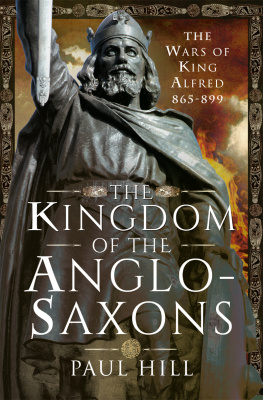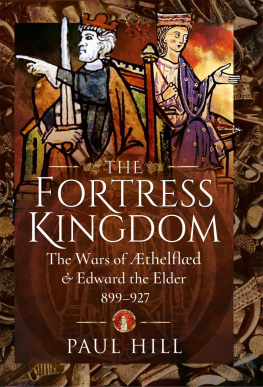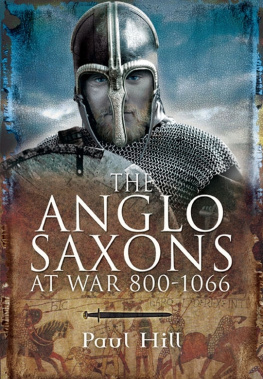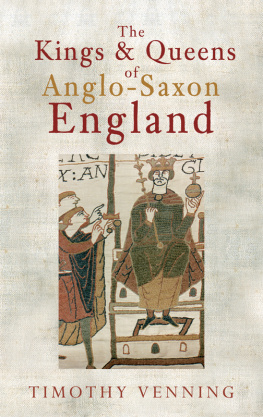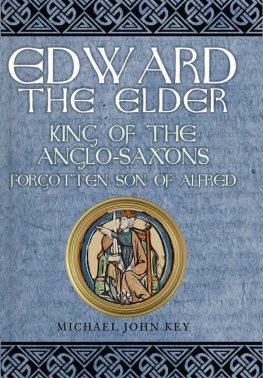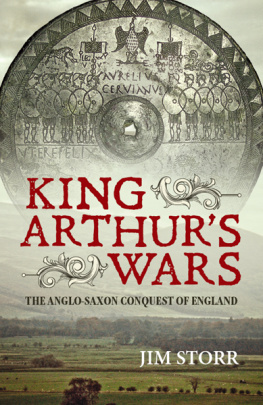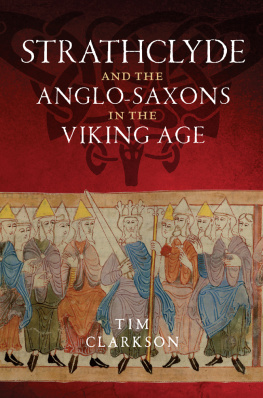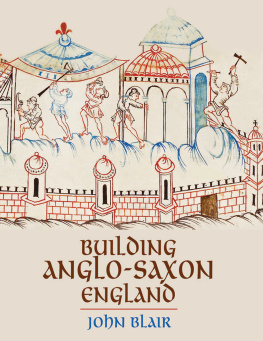Pagebreaks of the print version

The Kingdom of the
Anglo-Saxons
The Kingdom of the Anglo-Saxons
The Wars of King Alfred 865-899
Paul Hill
First published in Great Britain in 2022 by
PEN & SWORD MILITARY
An imprint of
Pen & Sword Books Ltd
Yorkshire Philadelphia
Copyright Paul Hill, 2022
ISBN 978 1 52678 249 6
eISBN 978 1 52678 250 2
Mobi ISBN 978 1 52678 250 2
The right of Paul Hill to be identified as Author of this work has been asserted by him in accordance with the Copyright, Designs and Patents Act 1988.
A CIP catalogue record for this book is available from the British Library
All rights reserved. No part of this book may be reproduced or transmitted in any form or by any means, electronic or mechanical including photocopying, recording or by any information storage and retrieval system, without permission from the Publisher in writing.
Pen & Sword Books Ltd incorporates the imprints of Pen & Sword Archaeology, Atlas, Aviation, Battleground, Discovery, Family History, History, Maritime, Military, Naval, Politics, Social History, Transport, True Crime, Claymore Press, Frontline Books, Praetorian Press, Seaforth Publishing and White Owl
For a complete list of Pen & Sword titles please contact
PEN & SWORD BOOKS LTD
47 Church Street, Barnsley, South Yorkshire, S70 2AS, England
E-mail:
Website: www.pen-and-sword.co.uk
Or
PEN AND SWORD BOOKS
1950 Lawrence Rd, Havertown, PA 19083, USA
E-mail:
Website: www.penandswordbooks.com
Photograph Credits
Colour Plates
.
.
.
.
.
). Surviving sections of London Wall at Salters Garden and Tower Hill. Paul Hill. Author Collection.
. Glass engraving at Hyde Abbey Garden, Winchester, by Tracey Sheppard. Photographs Paul Hill. Author Collection.
Black and White Photographs
.
. Two commemorative flagstones in Lady Bridge at Tamworth by Luke Perry. Photographs Paul Hill. Author Collection.
. Statue of King Alfred at Wantage. Paul Hill. Author Collection.
. York City Walls. Photographs Julie Gilbert.
. The Confluence of the Thames and Kennet at Reading where the Danes camped in 870-71. Photographs Paul Hill. Author Collection.
.
.
. King Alfreds Tower, or Stourton Tower. Photographs Richard Hill.
. The proposed burh at Eashing. Photographs Paul Hill. Author Collection.
. The Anglo-Saxon defences at Wareham. Photographs Paul Hill. Author Collection.
. North bank of the Thames at London, and the Queenhithe Mosaic. Photographs Paul Hill. Author Collection.
.
. Three graves at Hyde Garden; Alswitha Terrace; site of Nunnaminster, and outline of Old Minster, Winchester. Photographs Paul Hill. Author Collection.
List of Maps and Plans
A Note on the Charters
The charters referred to in this book are noted as S numbers. These relate to P.H. Sawyers 1968 publication Anglo-Saxon Charters, an Annotated List and Bibliography , London. An electronic version is to be found at https://esawyer.lib.cam.ac.uk/about/index.html (accessed 19/12/2020).

Map 1: Anglo-Saxon England and Wales on the eve of the Danish invasions c. 865.
Introduction
All is troublesome
in this earthly kingdom,
the turn of events changes
the world under the heavens.
The Wanderer
In a time of almost apocalyptic upheaval when ancient kingdoms were destroyed by ruthless men, the foundations of a country we now know as England were laid. This is the story of how England began. At the heart of it is another story, that of the most influential family to have ever lived in England. In recent centuries, Georgian and Victorian scholars, politicians, playwrights, artists and sculptors all showed their fascination with Alfred the Great, king of Wessex (87199). They ascribed to him, in various ways, a vision and wisdom which inspired the rebuilding and enlargement of a kingdom all but destroyed by the Danish invasions of the ninth century. In some ways Alfreds achievements are a little more prosaic than the way in which they have been portrayed over the centuries, but the almost feverish manner in which the cult of Alfred has been pursued is understandable. Alfred is still rightly regarded as the architect of England, a sort of spiritual father to the nation. Despite this being a seemingly quaint notion, any arguments to the contrary (of which there have been many over the years) do not seem to hold water for long.
Less celebrated, however, are Alfreds children and grandchildren and their roles in making his vision a reality. They built upon the political, spiritual and physical foundations of the remnants of the English kingdom of Mercia and of the kingdom of Wessex, extending their influence into a region which had become dominated by a Danish and later Anglo-Danish elite. This book will look at how Alfred the Great rose to power against a backdrop of warfare, betrayal and devastation, to provide the springboard for his children and grandchildrens own remarkable achievements. The volumes which follow on from this book will then look at the history of the same dynasty during the subsequent two centuries, with an emphasis on the impact of the warfare which characterized the age. Archaeologists, numismatists, etymologists, historians and anthropologists have all uncovered important evidence to help tell the story, and so too has the metal detectorist. In his darkest hour in 878, Alfred was famously bottled up in the Somerset marshes at Athelney, a place which flickers in and out of early English history like a half-remembered dream. The king, a fugitive in his own kingdom, on the run from the Danes, somehow turned the tide of his familys fortunes against his enemy. By this time, however, Wessex was on its knees. Control of Mercia was divided between Dane in the north and the east and Englishman in the south and south-west. But during the years which followed, a new cultural and political identity was formed under Alfred and his cosmopolitan court. It was a grand idea, heralded by a leading historian in recent times as a kingdom of the Anglo-Saxons, no less.
Two of Alfreds children in particular, a powerful prince and his remarkable older sister, take centre stage as Alfreds reign progresses. These were on the one hand the girl thelfld, and on the other, the boy Edward. Alfreds firstborn surviving child thelfld would go on to dominate political and cultural life in the heart of Mercia and both the brother and sister can be said to have made a lasting impact upon Englands history and landscape.
But not everyone was happy in Alfreds wider family. Nor were they comfortable in his new country. We shall see why family antagonisms dominated the behaviour of so many men and women. One of the central themes of this volume and those which follow it in the series, is the notion of how memories died hard in Anglo-Saxon England. Old English literature is full of reminiscences, of melancholic yearnings for a return to better days. Even Alfred himself would write of a time when learning and literature had been widely practised across the country and he would decry the lack of it in his own day. But his was not just a sentimental nostalgia. For Alfred, the revival of learning in his kingdom would be of singular importance to the running of the kingdom and the triumph of Christianity. But memories in these days also worked in another way. To the aristocracies of the kingdoms of ninth-century Anglo-Saxon England, it was all about families. In fact, it was all about branches of families, to be precise. Leading families were particularly concerned with their dynastic links and were forever looking backwards for ancestral legitimacy, whether it be to justify their current positions of power, or to establish a right to land or property. The family of Alfred was no different. Put simply, the fact that we read and write about them even today shows that they were very good at it indeed.

